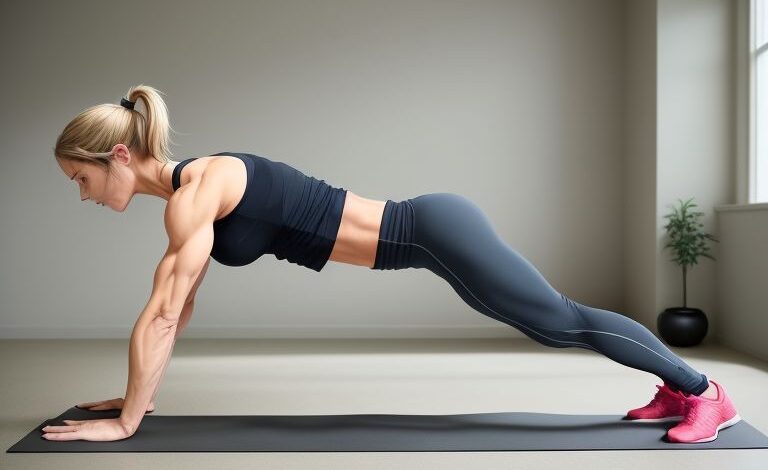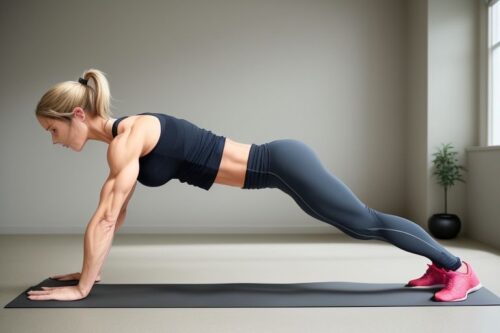The Ultimate Guide to Boosting Your Fitness Routine with Bodyweight Exercises

The Ultimate Guide to Boosting Your Fitness Routine with Bodyweight Exercises
Bodyweight exercises are gaining popularity in the health and fitness niche due to their effectiveness, convenience, and ability to be performed anywhere, anytime. Whether you're a beginner looking to start your fitness journey or a seasoned athlete wanting to switch things up, bodyweight exercises offer a fantastic way to build strength, improve flexibility, and boost cardiovascular health. Plus, they require zero equipment.

In this in-depth guide, we will explore the benefits of bodyweight exercises, how to incorporate them into your fitness routine, and practical tips for achieving your fitness goals without the need for expensive gym memberships or gear.
What Are Bodyweight Exercises?
Bodyweight exercises are strength training exercises that rely on an individual's weight to provide resistance against gravity. These exercises require no additional equipment, making them accessible for everyone. From squats to push-ups and lunges, bodyweight exercises target multiple muscle groups and enhance your overall fitness.
Benefits of Bodyweight Exercises
1. No Equipment Required
Bodyweight exercises require no specialized equipment, making them highly accessible. Whether you're working out at home, in a park, or while traveling, you can maintain your fitness routine without needing to invest in expensive weights or machines.
2. Suitable for All Fitness Levels
Bodyweight exercises are highly adaptable, allowing beginners to start with easier variations and seasoned athletes to increase intensity with more challenging versions. For instance, a basic plank can be modified to a side plank for added difficulty.
3. Full-Body Workout
With the right combination of exercises, you can target every muscle group in your body. Squats, push-ups, burpees, and planks are just a few examples of bodyweight moves that strengthen your legs, core, arms, and back simultaneously.
4. Improves Functional Fitness
Bodyweight exercises mimic everyday movements, making them an excellent way to improve functional fitness. This helps with tasks like lifting, reaching, and climbing stairs, reducing the risk of injury in daily life.
5. Boosts Metabolism
These exercises are a fantastic way to boost your metabolism. High-intensity interval training (HIIT) with bodyweight exercises increases your heart rate, which accelerates calorie burn even after the workout is over.
How to Build an Effective Bodyweight Workout Routine
When creating a bodyweight workout plan, it's essential to include exercises that target different muscle groups. Here's a guide to help you build a balanced routine:
1. Warm-Up
Before starting any workout, always warm up to prepare your muscles and joints for exercise. Spend 5-10 minutes on dynamic stretching, such as arm circles, leg swings, and gentle jogging in place.
2. Lower Body Exercises
Squats
- How to do it: Stand with feet shoulder-width apart, lower your body by bending your knees, and push your hips back as if you're sitting in a chair. Rise back up to the starting position.
- Muscles worked: Quads, glutes, hamstrings
Lunges
- How to do it: Step forward with one leg, lowering your hips until both knees are bent at a 90-degree angle. Push back to the starting position and switch legs.
- Muscles worked: Quads, glutes, hamstrings, calves
Glute Bridges
- How to do it: Lie on your back with knees bent, feet flat on the floor. Lift your hips towards the ceiling, squeezing your glutes at the top.
- Muscles worked: Glutes, hamstrings, core
3. Upper Body Exercises
Push-Ups
- How to do it: Start in a high plank position with your hands slightly wider than shoulder-width apart. Lower your chest to the floor and push back up.
- Muscles worked: Chest, shoulders, triceps, core
Tricep Dips
- How to do it: Sit on the edge of a sturdy chair or bench, hands gripping the edge, feet extended. Lower your body by bending your elbows and then push back up.
- Muscles worked: Triceps, shoulders, chest
4. Core Exercises
Plank
- How to do it: Start in a forearm plank position, keeping your body in a straight line from head to heels. Hold this position for as long as possible.
- Muscles worked: Core, shoulders, glutes
Mountain Climbers
- How to do it: From a high plank position, quickly drive your knees to your chest one at a time, as if running in place.
- Muscles worked: Core, shoulders, legs
Bicycle Crunches
- How to do it: Lie on your back, bring your knees up to a 90-degree angle, and alternate touching your elbows to the opposite knee in a cycling motion.
- Muscles worked: Core, obliques, hips
5. Cool Down and Stretching
After your workout, spend 5-10 minutes cooling down with gentle stretching to improve flexibility and reduce muscle soreness. Focus on stretches that target the muscles you’ve worked.
How to Progress with Bodyweight Exercises
Bodyweight exercises can be easily modified to increase difficulty as you become stronger and more conditioned. Here are a few ways to keep progressing:
- Increase Reps: Start with 10-12 reps per exercise and gradually increase the number as your strength improves.
- Add Explosive Movements: Turn regular squats into jump squats or regular push-ups into clap push-ups for an added challenge.
- Minimize Rest Time: Reduce the time you rest between exercises to keep your heart rate up, turning your routine into a high-intensity workout.
- Use Single-Leg Variations: Switch to one-legged versions of exercises like lunges or squats to increase balance and strength.
Sample Bodyweight Workout for Beginners
This beginner-friendly bodyweight workout can be done in 20-30 minutes and covers all major muscle groups. Perform each exercise for 30 seconds, followed by 30 seconds of rest. Repeat the circuit 3-4 times.
- Jumping Jacks (Warm-Up)
- Bodyweight Squats
- Push-Ups
- Lunges
- Plank
- Glute Bridges
- Bicycle Crunches
Advanced Bodyweight Workout Routine
If you're more experienced, try this advanced bodyweight routine. Perform each exercise for 45 seconds, followed by 15 seconds of rest. Repeat the circuit 4-5 times for an intense workout.
- Burpees
- Bulgarian Split Squats
- Pike Push-Ups
- Jump Squats
- Side Plank (Switch sides halfway)
- Tricep Dips
- Mountain Climbers
Tips for Staying Consistent with Your Bodyweight Workout Routine
Sticking to a fitness routine can be challenging, but with the right mindset and strategies, you can make bodyweight workouts a consistent part of your lifestyle. Here are some tips to keep you on track:
- Set Specific Goals: Whether you want to lose weight, gain strength, or improve your endurance, having clear fitness goals will motivate you to stay consistent.
- Schedule Your Workouts: Treat your workouts like appointments. Set aside specific times each week to exercise and stick to your schedule.
- Track Your Progress: Keep a workout journal or use a fitness app to track your reps, sets, and improvements. Seeing your progress will keep you motivated.
- Mix It Up: Avoid workout boredom by varying your routine. Try new bodyweight exercises or increase the intensity with HIIT.
- Listen to Your Body: While consistency is important, don’t forget to listen to your body. Rest when needed and avoid pushing through pain to prevent injury.
Frequently Asked Questions (FAQs)
1. Can bodyweight exercises help me lose weight?
Yes! Bodyweight exercises can be highly effective for weight loss, especially when combined with cardiovascular movements like jumping jacks, burpees, or mountain climbers. High-intensity bodyweight workouts burn calories and build muscle, which boosts your metabolism and helps with fat loss.
2. How often should I do bodyweight workouts?
For optimal results, aim for at least 3-4 bodyweight workouts per week. You can vary the intensity and focus on different muscle groups to ensure your body gets the necessary recovery time.
3. Are bodyweight exercises enough to build muscle?
Absolutely! Bodyweight exercises can build muscle when done with proper form and progression. Increasing reps, adding plyometric movements, or trying single-leg variations can help you continue to build strength and muscle over time.
4. Do I need to follow a specific diet while doing bodyweight exercises?
While exercise is essential, following a balanced diet is crucial for achieving fitness goals. Make sure to consume enough protein to support muscle growth, along with a variety of fruits, vegetables, and whole grains to fuel your workouts.
Bodyweight exercises offer a versatile, effective, and cost-free way to stay fit and healthy. Whether you're at home or on the go, these exercises allow you to target every muscle group, improve functional fitness, and boost your metabolism. The key to success is consistency and progression, so start today with a routine that suits your fitness level and work your way up from there.
With no equipment needed and countless variations available, bodyweight exercises are the perfect addition to any fitness routine—making them ideal for anyone looking to stay fit, no matter their lifestyle.

